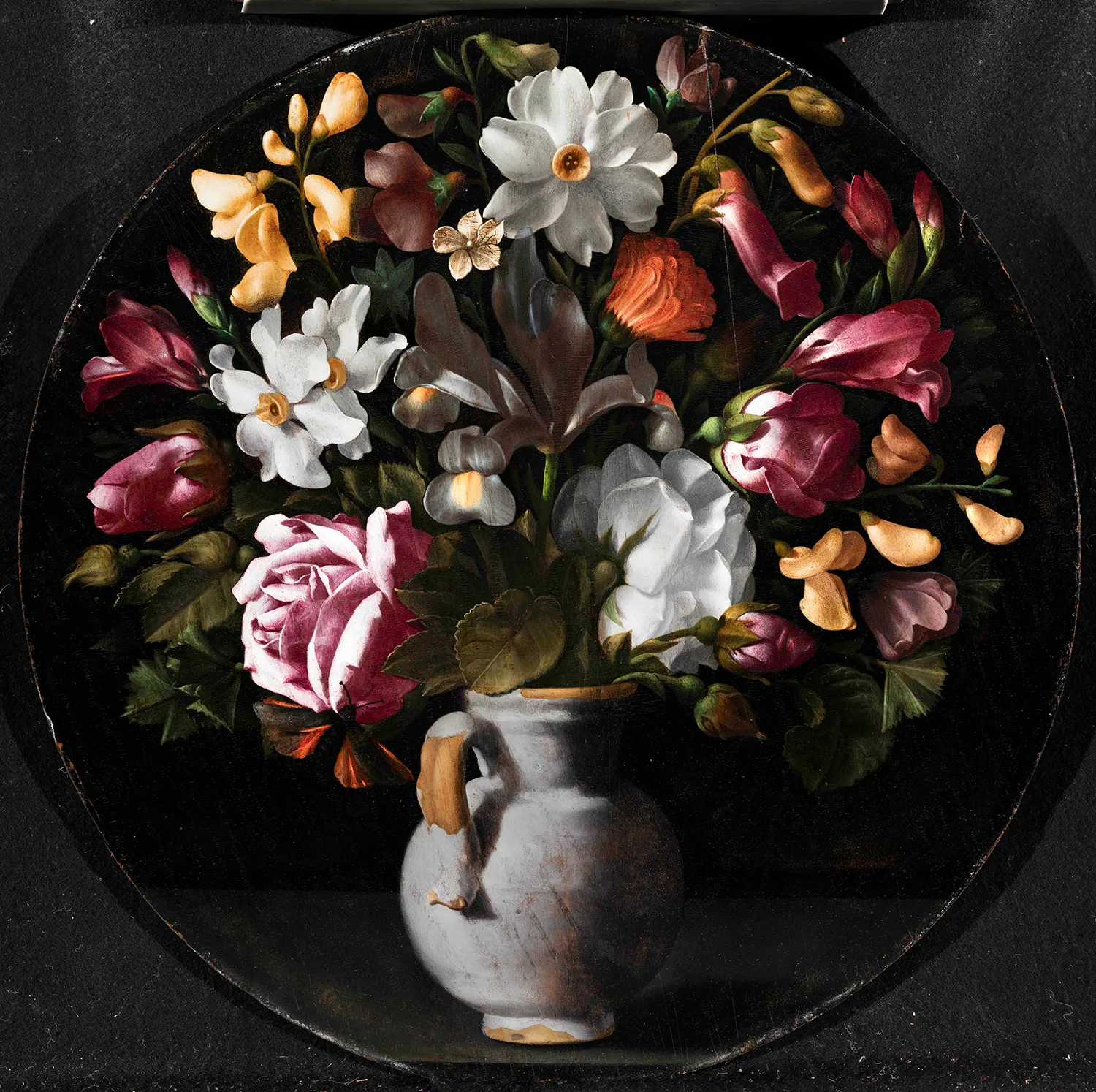As the warmer months of spring settle in, I am reminded of a Spanish proverb: “Marzo ventoso y Abril lluvioso sacan a Mayo florido y hermoso,” which in other words means: “A windy March and a rainy April, make May a month of bounty blooms.” This proverb stems from the traditional wisdom of Spanish farmers, who looked to the weather needed during these months to ensure abundant harvests later in the year. It also reminds me of a painting on view in the DIA galleries that tells the story of a farmer, the love for flowers, and the ability to capture them with intense realism.
On the DIA’s the second-floor south spine, we display one of the greatest Spanish still-life paintings of the 17th century. On a long-term loan to the museum from a private collection for decades, this work painted on a panel represents an austere vase with flowers. Spanish artist Juan Fernández painted this circular painting in 1636. We do not know much about his personal life, except that he was nicknamed “El Labrador” or “The Farmer,” implying that he cultivated land. Nothing is known of his training as a painter, and it is very possible that he was a self-taught artist who lived as a recluse, farming his land away from the buzzing life of the Court of Madrid. Most information we have about his artistic activities is from the 1630s, including the commissions he received from English diplomats in Madrid on behalf of King Charles I of England. It is interesting to note that El Labrador was one of the first Spanish artists recognized internationally and his most coveted works were still-life paintings representing bunches of grapes and vases with flowers. In fact, King Charles I had some of Labrador’s still-life paintings in his famous collection.

Vase of Flowers, 1636. Oil on wood panel. Juan Fernández, "El Labrador," Spanish. Anonymous loan.
The painting at the DIA, Vase of Flowers, shows a bouquet of flowers — including roses, irises, narcissuses, and retamas, among others — in an arrangement that fits the panel’s circular shape. The bouquet sits on a ledge against a dark background. It is illuminated by a dramatic light from the left side, which modulates every petal and leaf, creating a three-dimensional effect throughout the composition. Each flower is painted with the attention of a botanist, and to indicate the masterful rendering, a butterfly with orange and brown wings — perhaps a Monarch — poses on a pink rose to the left. The flowers are set inside a worn pottery jar. This humble object aligns well with the idea of the modest life of this farmer painter, who chose such a jar instead of depicting a Venetian crystal vase or any other luxurious vessel as was the custom of the Madrid flower painters of the time. The dry, humble material of the jar juxtaposes the fresh satin-smooth delicacy of the surrounding petals, triggering our imagination.
This magical painting by El Labrador is perhaps his masterpiece and could certainly hang in the permanent display of the most famous museums around the world, from the Prado in Madrid to the Louvre in Paris. It has a superb artistic quality equal to any works by the celebrated Caravaggio, and it is also extraordinarily modern. It almost feels as if this painter farmer, on one given morning, collected some flowers from his backyard, put them inside an everyday kitchen jar, and painted them, as though he was meditating on the beauty of creation. I am pretty sure that like every Spanish farmer, El Labrador wished for a windy March and rainy April, so he could paint these amazing flowers later in May. From the fields of Spain to the galleries of the DIA, we can all enjoy art and nature coming together, as we welcome the season of flowers in Michigan.


